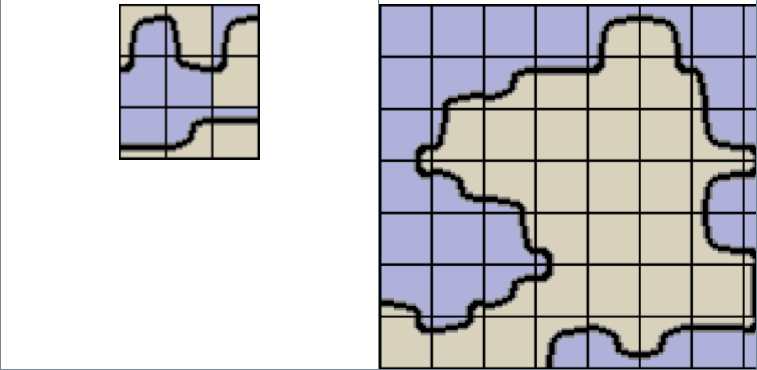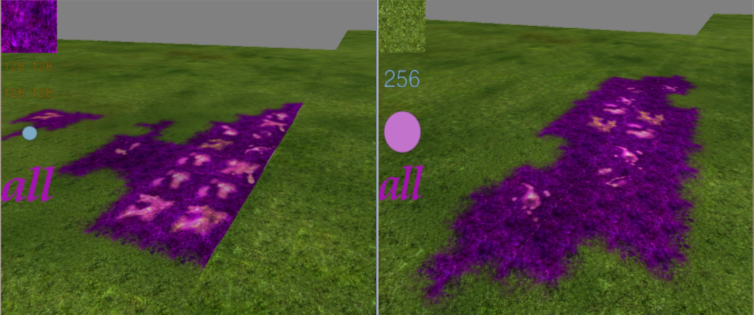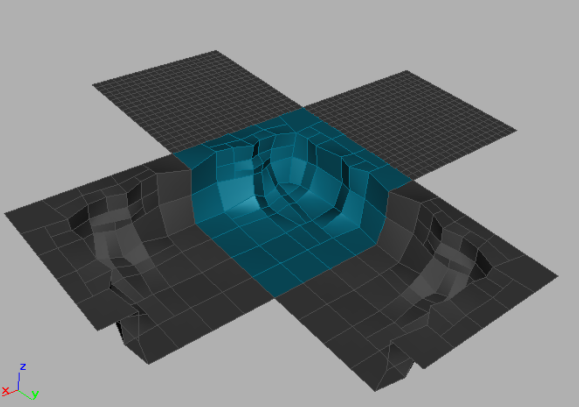...
The system is a 3D extension of traditional 2D isometric grid systems. In such systems, each 2D block is usually a square. The landscape designer paints a grid, using several sets of blocks (e.g. plain, plateau, swamp). Each square is assigned a random block from the chosen set. It implies the border of all blocks in a set must be compatible. When the designer chooses another set, the software select the proper join between the blocks of the two different sets from a set of transition blocks. To produce transition blocks, the simplest way is to create three basic blocks. The resulting landscape is however quite monotonous:
Using nine basic transition blocks, positioning borders at either 1/3 or 2/3 of an edge, is a well-known improvement:
Standard Block Design
In a block set, all the blocks must be geometrically compatible. The texture at the border of a block must continue at the joint border of its neighbour (the left picture below shows a wrong block border while the right one shows a correct border).
To produce a textured block, respecting the block constraints, the designer works on a pattern, seeing ghost copies of his work on adjoining blocks.
Transition Block Design
To join blocks of two distinct sets, we can't use standard blocks but must use transition blocks. The left picture below shows a wrong block border while the right one shows a correct border).
The designer has to produce nine transitions blocks for two block sets. He works on a 3D pattern.
The designer can assign each block some attributes, for example he can decide if a slope can be walked over or is a barrier. This helps generating the collisions.
...





